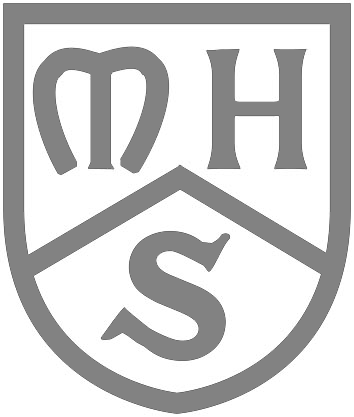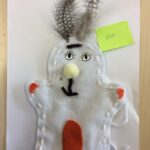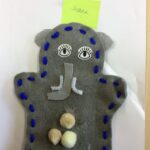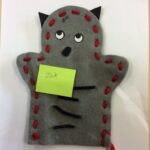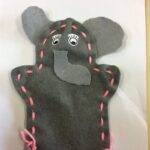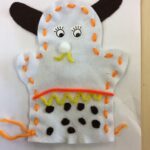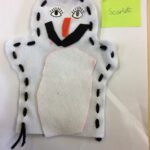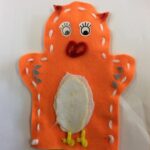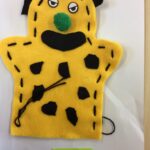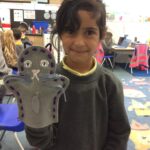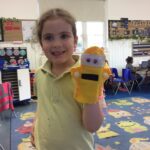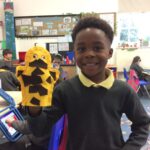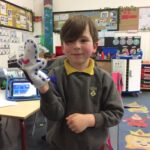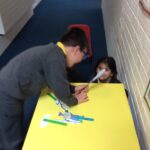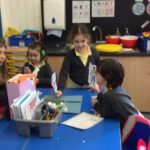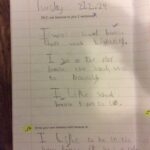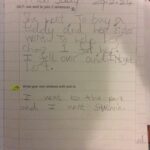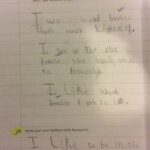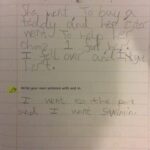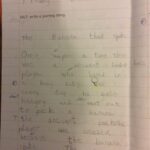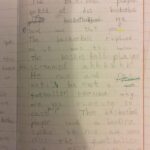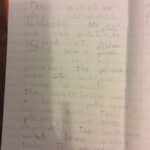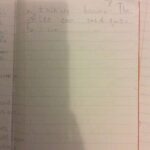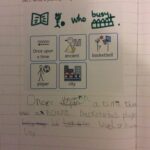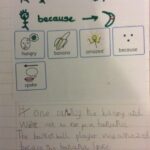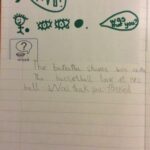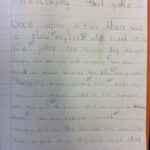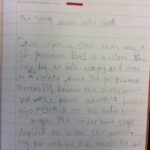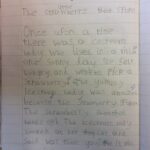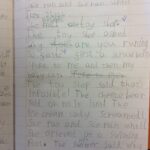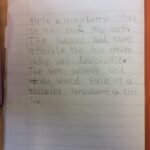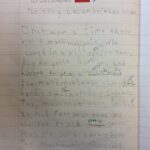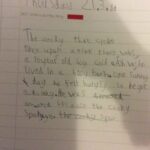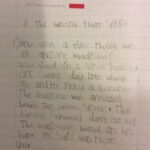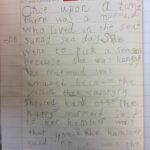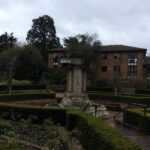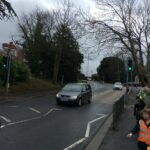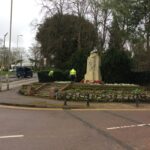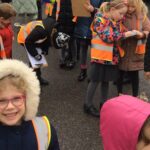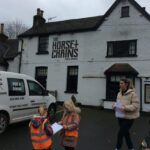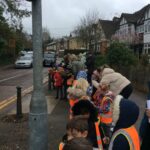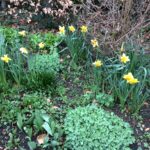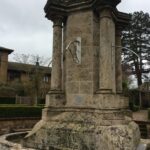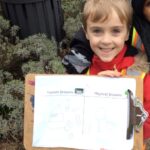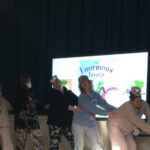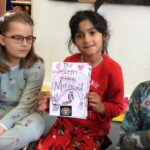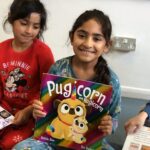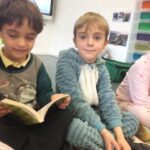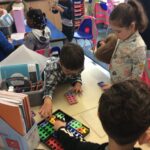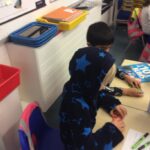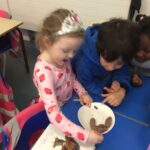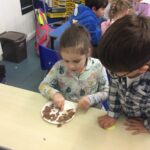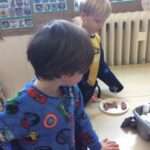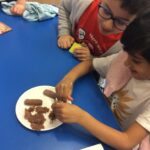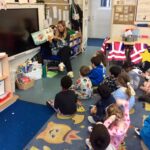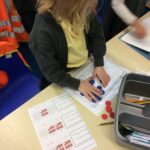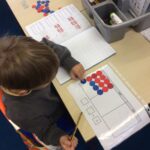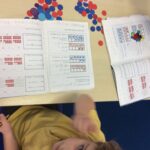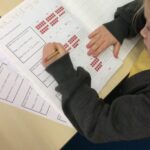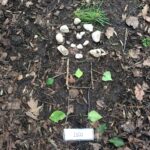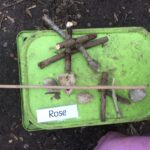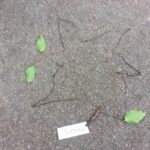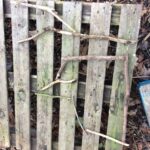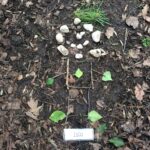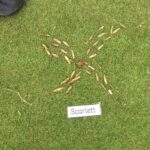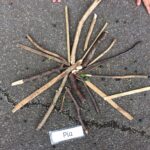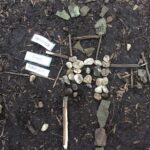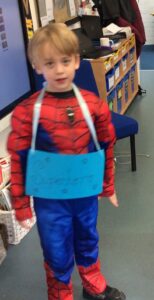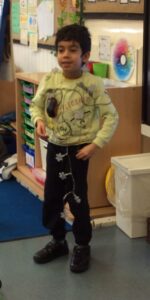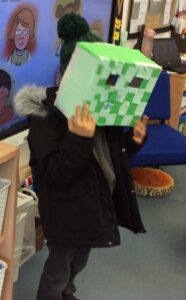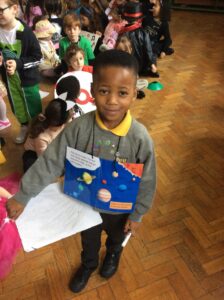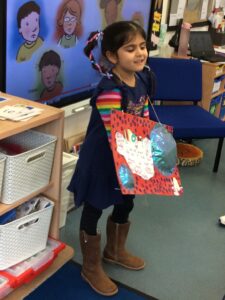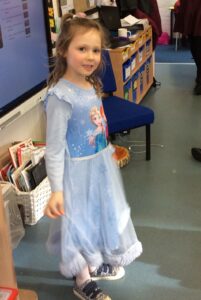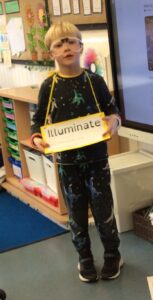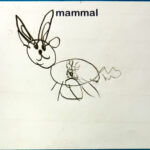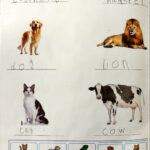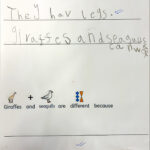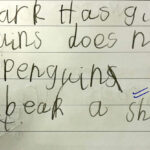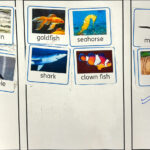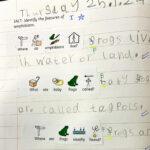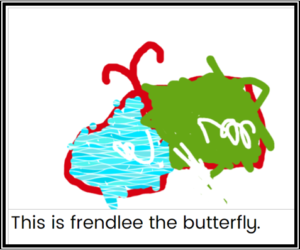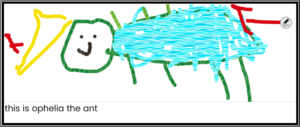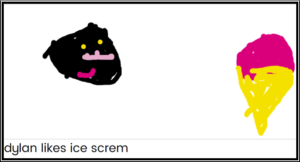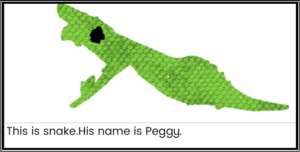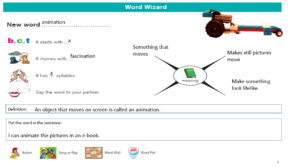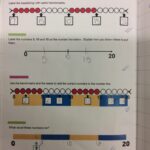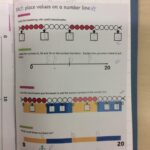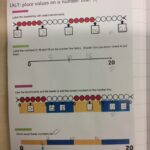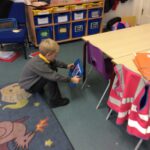Mar 282024
DT- Making puppets
In DT this half term we have worked hard to explore, design and make our very own animal puppet. Firstly we look our time to explore different kinds of puppets such as :
- Finger puppets
- Hand puppets
- Sock puppets
- String puppets
After that we designed our own puppet ad chose the colours of our puppet and thread. We then took two weeks to carefully sew and make our puppets come to life with the help of some lovely parents and carers.
Lion class:
Panther class:
How you can help at home:
- Can you design, make and evaluate a puppet at home using household objects?
- Can you create a story about your puppet?
Mar 212024
Journey Stories
This half term Year 1 have been learning and writing journey stories.
We started by learning a story called ‘The Papaya That Spoke’. We drew a story map and added actions to help us remember it. We also used puppets to retell the story. Have a look on Seesaw to see our puppet shows!
We practised using the conjunctions ‘and’ and ‘because’ to join 2 sentences together so that we could use them in our own story writing.
Then we worked together in our classes to change the characters and the setting in the story. Panthers changed the story to ‘The Banana That Spoke’ and Lions chose ‘The Watermelon That Spoke’. We worked hard to learn the new story by heart before working hard to write the new story down.
Finally this week we have been working independently to change the story ourselves. We are trying hard to keep our handwriting neat with clear ascenders (tall letters) and descenders (letters that sit below the line). We have also been thinking carefully about the punctuation we use and our spelling.
How to Support at Home
- Ask your child to tell you their new story – you could have them retell alongside the recording on Seesaw
- When reading stories at home have a go at changing the characters and settings and then retell the story with your new ideas
- Continue to complete weekly handwriting homework – remember to watch your child to check they are forming each letter correctly
- Practise spelling the words on your word mats that you have at home
Mar 142024
Geography- Bushey Rose Gardens
This week Year 1 took a trip to Bushey Rose Gardens.
While we were walking we stopped and completed observational drawings of different landmarks which included:
- Bushey Rose Gardens
- Traffic lights
- War memorial statue
We walked very sensibly using our listening ears and looking eyes. We walked along the paths and crossed the roads carefully with adults helping us.
Finally we arrived at Bushey Rose gardens and looked at different features. We know that human features are features that are made by humans and physical features are features that are natural.
- A physical feature
- A human feature
- We made a list of different features that we saw.
How you can help at home:
- In your garden or local park can you spot different human or physical features and make a tally chart?
- Create an observational drawing of a plant- can you label the 4 key parts of a plant (roots, stem, leaf and flower).
Mar 072024
World Book Day
Year 1 had a great day celebrating World Book Day. We all wore our pyjamas to school and brought in some of our favourite books.
We started the day altogether with an assembly. We talked about the different ways you can enjoy books and shared some of our favourite places to read. We thought it was quite funny that some people like to read on the toilet! We loved listening to some of our teachers retelling the story of ‘The Enormous Turnip’.
Back in our classes we shared our books with our friends – we told our class why we liked the books we had brought in and even had a chance to read some of them.
Whilst dressed in our pyjamas, we also did some maths and some science. Panthers enjoyed reading the story ‘Poo in the Zoo’ and then investigating some ‘poo’ to find out if it had come from an omnivore, carnivore or herbivore.
We finished the day with a ‘Surprise Reader’.
If you would like to volunteer to come in and be a Surprise Reader please do let us know.
How to help at home
- Visit Bushey library – try looking in a different section to the part you usually look at, or choose a book you wouldn’t normally choose.
- Share your favourite book with some of your family members, maybe an auntie/ uncle, grandparent. Perhaps a younger brother/sister would like to see your favourite book.
- Make up your own story – where will your story be set? Which characters will you have in your story?
Feb 292024
Taking away by counting back
This week in Year 1 we have been learning how to subtract by counting back. We used the taking away story of first, then and now. For example, first there was 16 birds on a tree, then 8 flew away, now there are 8 birds.
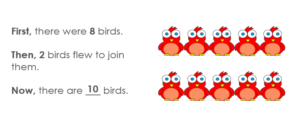
After this we practically moved counters from the first to then and finally to now when reading different equations.
- We used our first, then and now mats to support our learning.
- We carefully counted each number.
We then consolidated our learning by completing missing parts of different taking away stories.
How to help at home:
- Use teddies or toys to complete your own taking away stories using the vocabulary first, then and now.
- Recall the inverse of the number bonds to 10/20 e.g 10-7=3.
Feb 082024
Mini Explorers
Andy Goldsworthy
Over the last few weeks we have been looking at Andy Goldworthy’s sculptures. We found out that Andy Goldsworthy uses natural materials to form his sculptures. For example he uses sticks, rocks, leaves and even cow dung!
We used the natural objects found in our forest area to design and make our own sculptures. We followed our designs carefully and then created our very own sculpture.
Here is some of our beautiful artwork:
How you can help at home:
- Design and make your own sculptures using natural materials from the park.
- Can you evaluate your work by giving it two stars and a wish?
Feb 022024
Vocabulary Day
The children looked splendiferous as they entered school today! We really enjoyed becoming word detectives to find out the meaning of new words as well as celebrating the range of words we knew. Some children celebrated words in their home language, others chose words from their favourite sport and some from books, conversation and films! We had words ranging from illuminate to electric.
We particularly enjoyed taking part in the Vocabulary Parade, and finding out about our friends’ words and what they meant. By the end of the day many of us had learnt lots of new words!
We want our children and learning community to be excited about words, to celebrate new words learnt and be curious to find out the meaning of unknown words. Learning words is really important; the more words your child knows, the more it will help them at school. By working in partnership, the children here at Merry Hill will become skilled word learners. Below are some exciting ideas to try at home.
How you can help at home:
- Cooking – Cooking together involves co-operation, planning, reading, listening and lots of vocabulary – all skills you need to succeed in school, as well as being great skills for life. https://www.cookuk.co.uk/children-index
- Get crafty – Crafting and/or constructing with your child provides lots of time for talking. Try and listen more than talk, and comment more than question. This website will give you further ideas, but you can do great things with bricks or by cutting up old cereal packets.
https://www.bbc.co.uk/cbeebies/grownups
- Reading and talking – Reading books to your child is a great way to develop your child’s language. Books expose children to more complex language. For children who are learning to read, hearing stories can make them more enjoyable. For confident readers talk about what you have read together to further develop their understanding.
- Get your child involved in planning parties or trips – this involves lots of talking, thinking and planning. ‘Who will be coming? What will you need to do? What food will you need? What can you do before? Who needs to do what?’ and maybe even ‘ How can we keep costs down?’
- Play word games – see the attachment within Merry Hill Matters this week
Jan 252024
Sensational Scientists!
Over the last few weeks in Science we have been identifying, grouping and comparing animal groups. So far, we have learnt about mammals, birds, fish and amphibians. In week 1 we learnt that mammals are animals which have hair or fur.- A drawing of a mammal
- Identifying mammals
In week 2 we learnt about the difference between birds and mammals. We learnt that birds have feathers and beaks.
- Comparing mammals and birds
In week 3 we learnt about fish. We know that fish breathe under water with gills. We put animals into groups of mammals, birds and fish.
- Next step: comparing birds and fish
- Grouping animals
This week we have discovered different facts about amphibians. We researched facts using booklets and answered questions in our books.- Answering questions about amphibians
How you can help at home:- Create a fact file about your pet or favourite animal.
- Can you go on an animal hunt and find different mammals and birds at the local park?
Jan 182024
E-books
This half term in computing we are learning about e-books.
We started the topic off by looking at books and e-books and comparing them – what’s the same and what’s different. We noticed that e-books could make sounds and sometimes the pictures move too.
In week 1 we used Purple Mash to have a go at making some of our own pages for an e-book. We used the paint tools to add pictures, and then the keyboard to write a sentence that could go with the picture we had drawn. We saved our work so that we could go back to it in the next lesson.
In week 2 we learnt that when a picture moves on a screen this is called an animation. Animation was our word of the week.
We used the ‘My Work’ folder to find and open our work from the previous week. Then we used the tools on ‘2Create a Story’ on Purple Mash to animate the pictures in our e-books.
At the end of the lesson we made sure to save our work again so that we can continue adding to it over the next few weeks.
How to support at home:
- Visit the Oxford Owl website using your log in, how are these books the same/ different to your phonics reading book that you bring home?
- Choose a favourite story – how would it look as an e-book? Which pictures could you make move? Could you add any sound?
- Think back to our learning about Louis Braille – how might an e-book be helpful to someone with a visual impairment?
Jan 112024
Benchmarks
This week we have been looking at different benchmarks on a number line. We found 0, 5, 10, 15 and 20!We then practised placing the benchmarks on an empty number line. This was very tricky but we knew that 5 is between 1 and 10 and 15 is between 10 and 20.After this we had to try and work out where different numbers are on a number line without counting in 1’s. We know that the number 4 is between 0 and 5 and it is 1 less than 5.Here is our work from Lions and Panthers:
How to help at home:- Get a strip of paper, fold it in half and then in half again. Now you have 4 benchmarks. Can you label them?
- Practise counting in 5’s.
Dec 192023
Happy Holidays!
We hope you have a great holiday and a happy new year. Thank you for your hard work over the autumn term. We have had the best time settling in to year 1 and learning new exciting things.
How you can help at home:
- Continue reading your colour banded books
- Complete your Maths Mastery pack
- Practice writing sentences that have a capital letter and a full stop.
We hope you have a restful break and we look forward to seeing you all in January.
Dec 142023
Materials
This half term in Science we have been learning about materials.
We used the Word Aware approach to learn that a material is ‘What something is made from’. Then we went on a materials hunt around school. We looked for plastic, metal, glass and wood. We recorded our work on Seesaw.
Then we learnt about the material rock. We went outside to hunt for rocks and brought them back to our classrooms. Once back in the classroom we used magnifying glasses to look closely at our rocks. We worked in groups to sort them according to their properties, including rough and smooth, and heavy and light.
We have also learnt about the difference between objects and the materials they have been made from. We found out that some objects are made from 1 material and some are made from more than 1 material. At school we have chairs in the hall made from only wood, and in the classroom our chairs are made from plastic and metal.
How to help at home
- Choose some objects from around the house – what is the name of your object, what material is it made of?
- What materials are your toys mostly made from?
- Can you find anything that is made from just 1 material? 2 materials? 3 materials?
- Think about why the objects might be made of their materials e.g. the lego bricks are made of plastic because plastic is strong.
